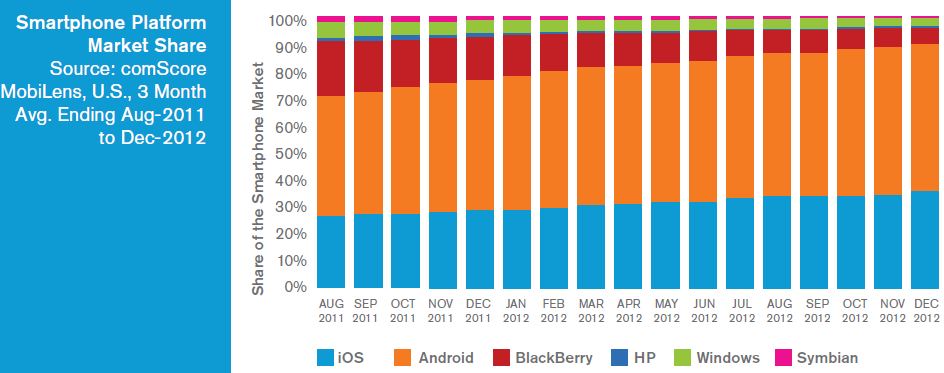Is Financial Services Content Marketing The New Black?
/ TweetOrange may be the new black in streaming video, but is financial services content marketing, and digital marketing in general, the new black online?
Probably not. But it does seem as if content marketing produced about financial services content marketing is in vogue lately.
When you toil in relative obscurity, as most mutual fund and exchange-traded fund (ETF) marketers (and those who support them on the outside) do, the spotlight can be jarring. The initial reaction may be giddiness that somebody is paying attention...and then there's unease, “Hmm, let's hope they’ve paid close enough attention to get this right.”
Most of what's being published is "right." Some of the reports include useful insights. What I object to are the sweeping generalizations, the reports that are lightly researched and/or derivative, and the errors. If this is financial services content marketers' day in the sun, I'd like to see the breakthrough work that's being done, including the creative and innovative solutions that are being identified, get acknowledged.
Financial Services Trails And Often Fails...
In March, I took exception to the start of a Content Marketing Institute post that sized up the state of content marketing in the financial services industry this way:
…financial service providers often fail to build and execute dynamic content marketing programs. Instead, they frequently rely on tried-and-true, but far less creative, tactics. Cue the deluge of exceedingly dry white papers and webinars, and the direct mail magazines that often just wind up in the trash.
To be clear, the problem isn’t a lack of effort, and it’s certainly not a lack of high-quality content. Instead, it’s the way the industry seemingly operates under the misconception that its heavy regulatory burdens both preclude and exempt it from taking a creative approach to content. Remember, those regulations are predominantly focused on what’s being said, not the style and delivery of the message.
Another problem is a palpable anxiety about the unknown that clearly stifles innovation and discourages a clear point of view.
The absence of a point of view? Uh, no, that doesn't characterize 90% of the work I see. I felt that this was a narrowly informed assessment. It partly redeemed itself by singling out three examples of creativity from Putnam Investments (the Retirement Savings Challenge blog), Credit Suisse (The Financialist digital magazine) and SunLife Financial's BrighterLife Website.
Or Maybe Financial Services Is Pioneering...?
A few weeks ago, an entirely different sentiment was expressed.
In what must be one of the least commented (1 comment) and shared Huffington Post posts ever (financial services marketing may not yet be a mainstream topic), a strategist from Contently.com on October 15 proclaimed: "Over the past few years, we've seen some of the biggest brand publishing success stories come from the financial industry and across the full spectrum of financial services.”
You can download the 26-page ebook Banking on Content: How the Finance Industry is Pioneering the New Marketing for Contently’s take featuring mostly U.S. examples from BlackRock, Prudential, Fidelity, Putnam (again with the Retirement Savings Challenge blog) and Credit Suisse (The Financialist again).
They lost me on page 4 with the statement: "…the industry has to contend with two major agencies that regulate their media use: the Financial Services Authority (FSA) and the Financial Industry Regulator Authority."
The FSA was a regulatory body in the UK abolished six months ago. It’s the Financial Industry Regulatory Authority. And, there's no mention of the Federal Financial Institutions Examination Council (FFIEC) or the SEC?
The Rise Of Digital Marketing In 2013?
It’s not unusual for marketing automation provider Marketo to publish ebooks focused on digital marketing and verticals. There’s “The State of Content Marketing & Social Media in the Medical & Fitness Industries” and “The Doctor Will See You Now: Lessons for Marketing in the Healthcare Industry.”
Marketing automation makes sense for many firms in this space and I know of implementations where it's adding value. My issue is limited to Marketo’s financial services ebook, which starts with the title: “Don't Get Left Behind: The Rise of Digital Marketing in Financial Services.”
According to the Financial Brand, 40% of financial marketers’ budgets was devoted to digital in 2013. In order to command that much of the budget this year, the rise of digital marketing would have been years ago.
I'll also push back on the assertion that “…financial institutions are holding themselves back by being unwilling to change with the times.” The statement appears on the same page as a bar chart that shows one of the top concerns in adopting digital marketing tactics is "inability to prove ROI." Seems like a legitimate concern, and one that's more on-point than willingness or unwillingness to change with the times.
You can download the report, which cites Credit Suisse (whose The Financialist is cited again), SunLife (BrighterLife again) and Allianz among others.
A Smarter Take
As I was wrapping up this post, I heard from someone who’s in the B2B content marketing business. Angela Long of Reputation Capital and I had talked several weeks ago, and she was following up with her whitepaper titled—wait for it—“Content Marketing for Financial Services.”
Although most of the content is directed to financial institutions, one of the case studies is about Putnam. I’d rank Putnam as one of the top content marketers in this space, and this pieces shows they have more to talk about than just their retirement blog.
There’s little to fault in this information-packed paper, which includes a few quotes from me. You can download it here.
Take It From Someone Who Does It
Ultimately, industry practitioners may be the most reliable source to turn to for an accurate, real-time look at how financial services digital marketing, including content and social tactics, is evolving.
Slowly, the investment strategists, money managers and product people are finding their public voices. I can't wait until CMO-types start getting out there, pointing to what they recognize as ground-breaking and promoting their own firms’ good work. This will help all around but most especially in recruiting the kinds of creative and innovative talent that mutual funds and ETFs need to go forward.
It’s from August, but here’s a best practice presentation from Augie Ray, Prudential’s Director of Social Media Strategy that I came across in a post published last week on Social Media Today.
How are financial services firms, including Vanguard, Fidelity, Ameriprise, USAA and Zurich, using social media to help resolve the trust gap? Ray provides excellent context and good examples.









